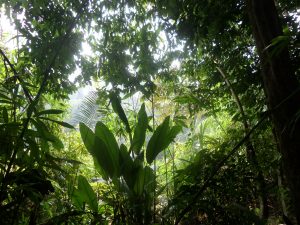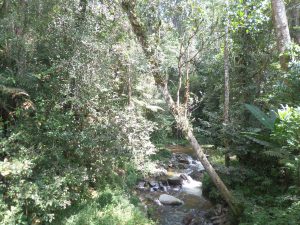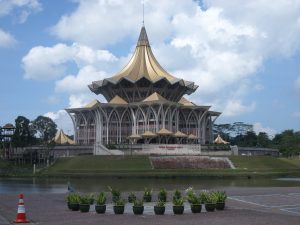1. Who are the Mentawai people?

The Mentawai people live on the Mentawai Islands off the coast of Sumatra in Indonesia. The islands are named after the people (not the other way round). “Mentawai” means “those who eat raw food”, but this is not true for them any more now, of course.
The Mentawai have a distinct culture and language vastly different from those found in neighbouring Sumatra. The Mentawai language uses quite a lot of Indonesian words, but is otherwise not understandable for Indonesian speakers.
The also have their own religion, though between the 1970s and the 1990s, they were forced to choose one of the five “official” religions offered to them. They complied, but they continue to believe and practice what they have always believed and practised before. Many of their traditions have also been banned by the Indonesian government, including teeth sharpening, a practice when women file their teeth so that they look like sawteeth (I didn’t see any women with sharpened teeth in the villages).
Mentawai people mostly live in traditional houses in the jungle, and they are organised into clans – a collection of families. See more about Mentawai culture in my other blog post.
2. Things you can see in the Mentawai villages
2.2 Meet the sikerei/shaman
The sikerei literally means “the one who heals” in the Mentawai language. In English, they are usually called shaman in the guidebooks. I have met five sikerei during my 4-day visit, and I stayed with two of them in their houses. The shaman is the only person who mustn’t wear modern clothes. The clothes are the same for every sikerei: a loincloth and headdress including one or two flowers in his hair, a necklace and some bracelets – but that’s all. I never saw them wear shoes, but I once saw one of them put on a T-shirt for the night, when the temperature dropped to a “freezing” twenty-something degrees Celsius.

The sikerei or shaman must know everything that can be possibly known about the different plants and herbs that can be used for treating medical problems. He must also serve as a guardian of the balance between man and nature, so he should be a wise man.
The sikerei must have tattoos all over his body, all of which have a specific meaning. The one over the ankles, for example, serves protective purposes. When the sikerei heals a person, he very often must expel the bad spirits from the sick body. Now when the bad spirits leave the body of the sick person, they may harm the sikerei himself – unless of course he is wearing the right tattoos, which protect him against them.
The tattoos are made in a traditional way with needles and a hammer-like tool, and there are tattoo-makers, who are trained and “authorised” for this job. Their services are not free, though. I talked to one shaman, who had only a few of the necessary tattoos. When I asked him about it, he said it was very expensive, and he couldn’t afford it yet. He must pay several pigs, chickens, various trees in addition to cash to the tattoo maker.
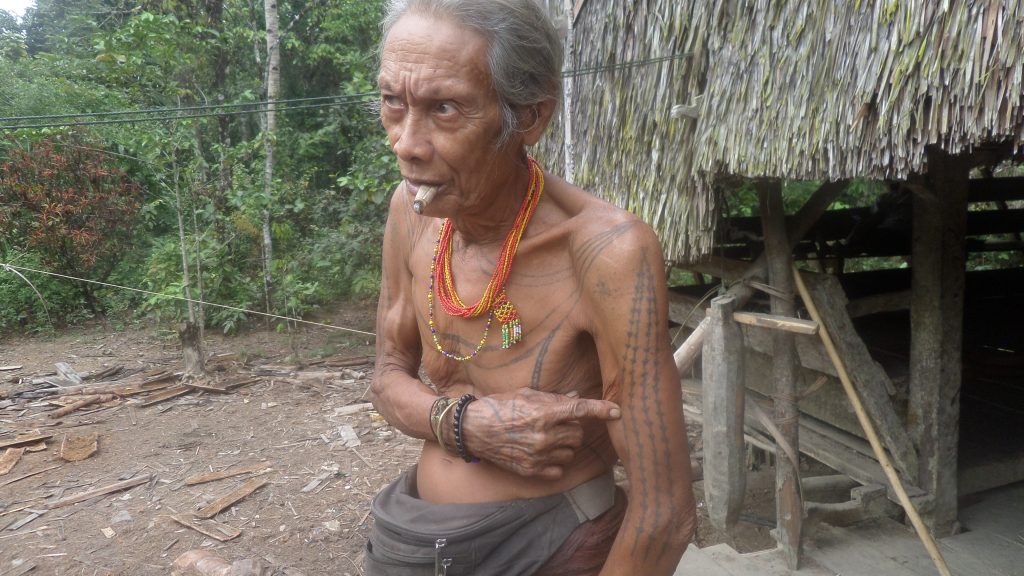
The shaman is a respected member of the family and of the whole community, too. I have only seen elderly sikerei, and they said to me that this is normal, since you need life experience, practice and wisdom to be a good sikerei. I also asked one shaman if he teaches younger people the knowledge he has gained, and this is what he said:
You can only teach those who feel an urge to learn.
And then:
You need to reach a balance between your emotional and your logical mind. Without this, you can easily make mistakes.

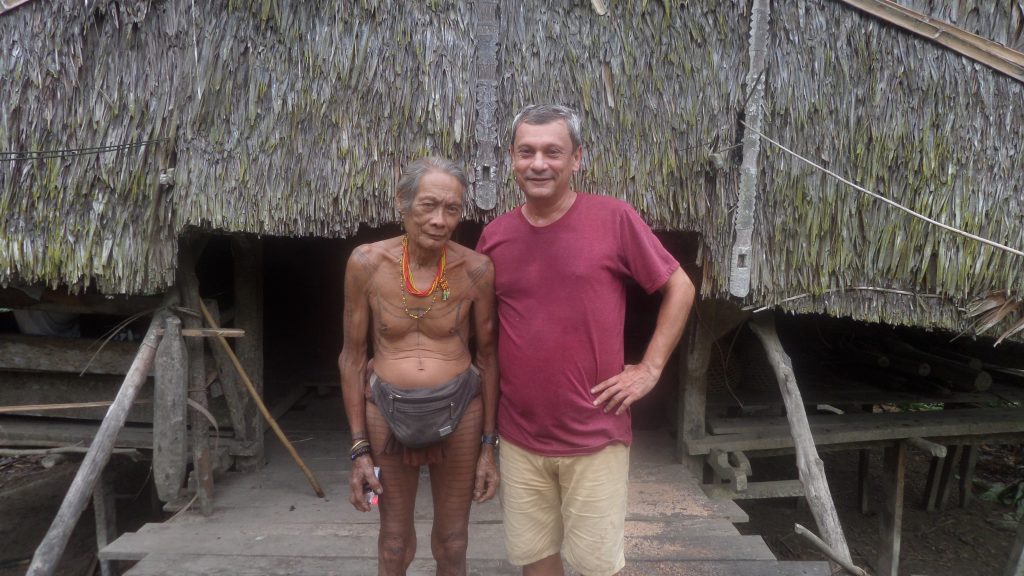
2.3 Go fishing with the ladies
One type of fishing is called “women-collecting” (or something similar) in Mentawai. This activity, as the name implies, is only done by women. They always wear banana skirts for fishing, and nothing on the upper body (except their tattoos, of course). The women make their nets themselves. The fish, crab and other creatures they collect are not a lot – at least they didn’t catch too much when I followed them. I actually had the feeling that they only do this for the sake of the tourist. But when I asked my guide, he assured me that this is a normal activity for them with or without the tourists. And the banana skirts are necessary because they want to avoid scaring the fish away: the banana leaves spread nicely on the surface of the water, and this way, the fish do not see the humans approaching.
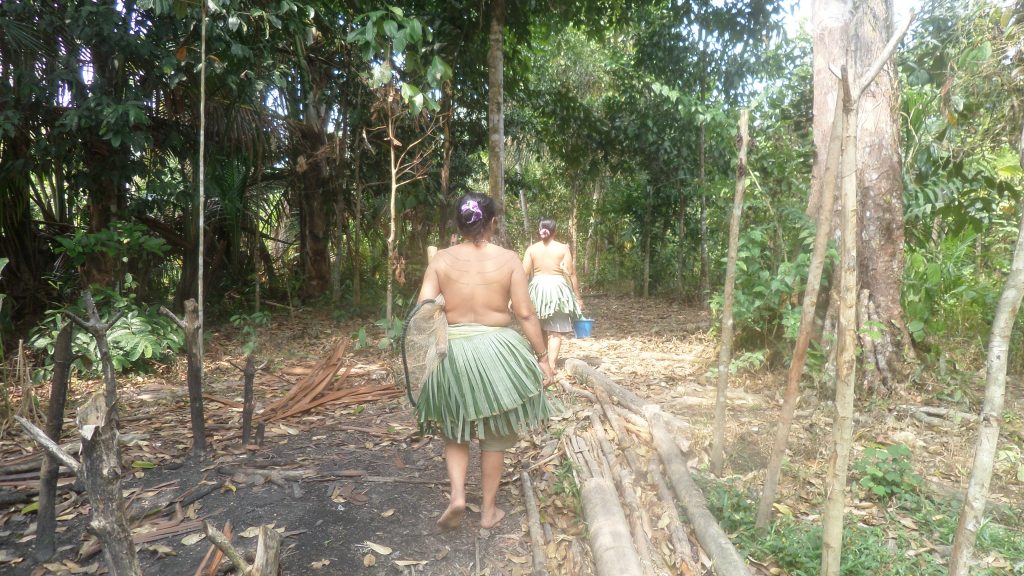
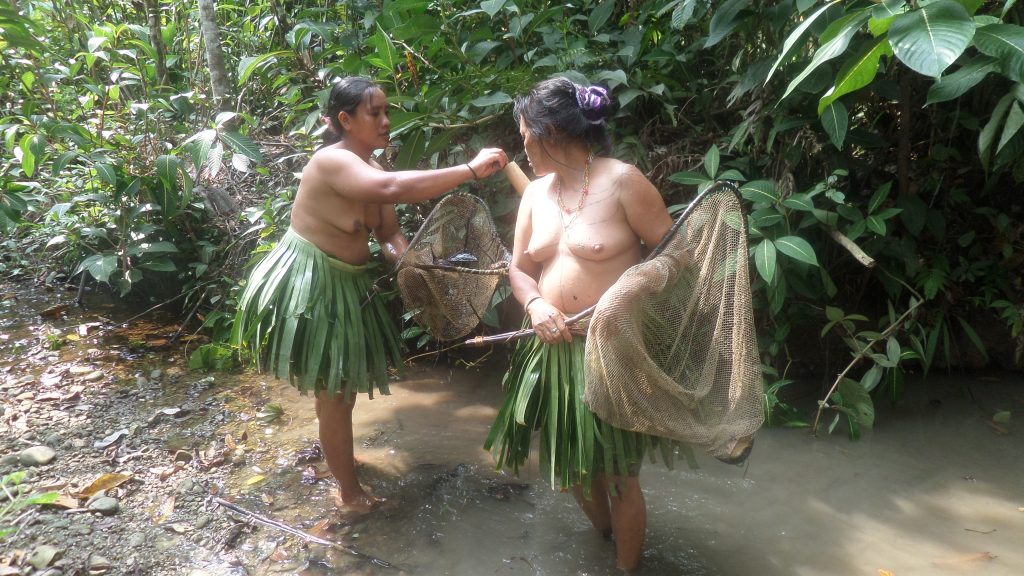
2.4 See how the shaman makes poison for hunting
The Mentawai still hunt for food. They hunt deer, wild boar and monkeys, among them the highly endangered Mentawai Gibbon. They traditionally use a bow and arrow for hunting, although I saw one young guy with a gun when I was there, and he said he needed it for hunting gibbon.
Now for hunting, they use a special poisonous concoction, which is made from the leaves of a certain plant (daggi), the roots of another plant (tuba), ginger and chilli. Out of these four, it is only the roots that are poisonous, but mixed with the other ingredients, they will have an increased effect. The four ingredients are grated and mixed well, and then squeezed, and the resulting liquid is spread over the arrow heads. Amanjano, the shaman who showed me how to prepare this poison, said that the animal will die from the poison after a short time. He exactly said that after shooting the animal, he smokes one (hand made) cigarette, and after that the animal falls down. (Between you and me: I don’t think this is a very short time…)
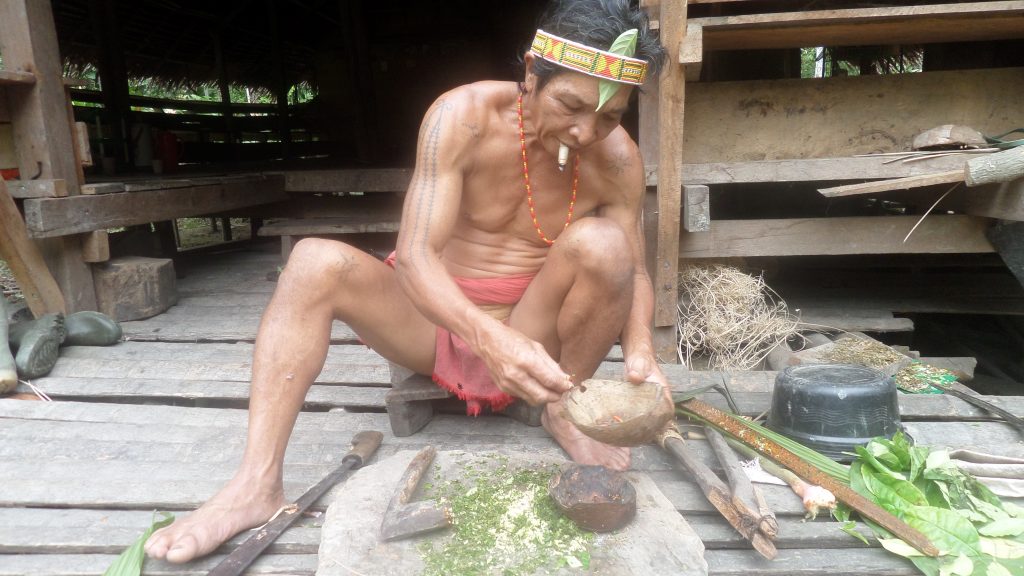
2.5 Join the shaman planting new trees
Sromut is a shaman who doesn’t know his age, but my guide thought he must be around seventy. He and an another shaman of a similar age showed me how they plant trees.
The Mentawai families use a lot of sago trees. They use it for everything: they eat it (after making flour from the inside of the tree trunk), they feed their animals with it, they use it for building materials, and they also eat the sago grubs which grow inside the tree trunk. This means that the sago is extremely important for them. The clans have sago plantations in the jungle, but even if the sago grows rather quickly (it takes about five years for a tree to be ready for use), they need to plant new trees very often.
They cut down a young tree which grows near a large one, and plant it somewhere where it will have enough space to grow.

2.6 See how the shaman makes loincloth
As I mentioned above, the sikerei can only have on piece of clothing: a loincloth wrapped around his waist. This is made from the bark of the baiko tree. Baja Tarason, another shaman showed me how they do this.
Of course they don’t need as many loincloths as there are visitors, but they still show it to everyone who visits their house. If you want, you can take the material home – I didn’t, because as a digital nomad, I am not returning home any time soon, so what can I do with an all-so-authentic but perfectly useless loincloth material made from the bark of a special Mentawai tree?
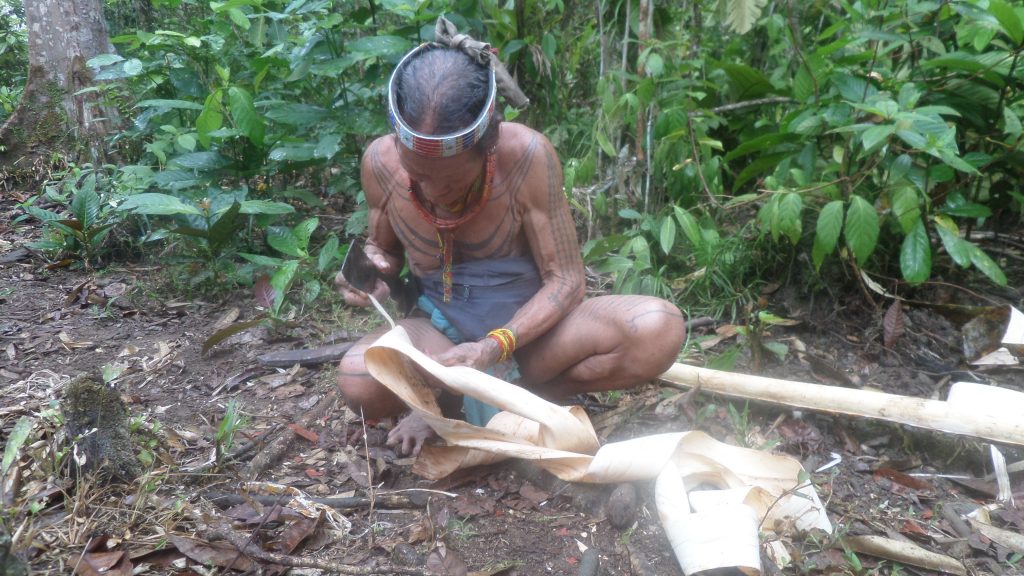
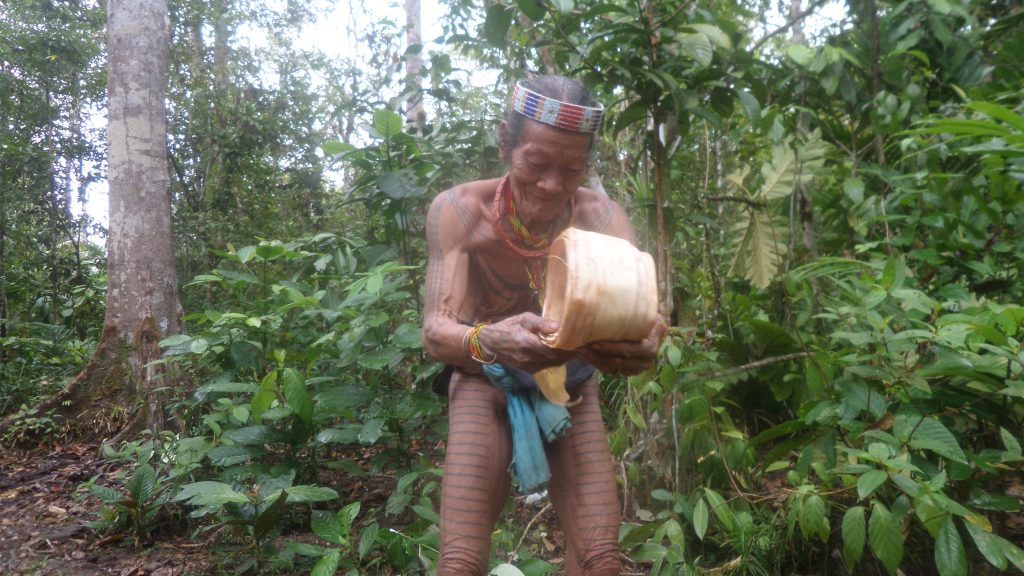
2.7 Have a chat (or serious conversations) with the people
Choose a guide who speaks both English and Mentawai very well. This is important, because otherwise, you won’t be able to have meaningful conversations with your hosts. Even this way, it felt a little awkward sometimes, because they would never stop chatting, and I had no choice but to interrupt them sometimes, and ask them what I wanted to – which was obviously far away from the topic they were just discussing. If you speak Indonesian (or Malay – they are the same language) though, you will be fine. The Mentawai speak Indonesian, too.
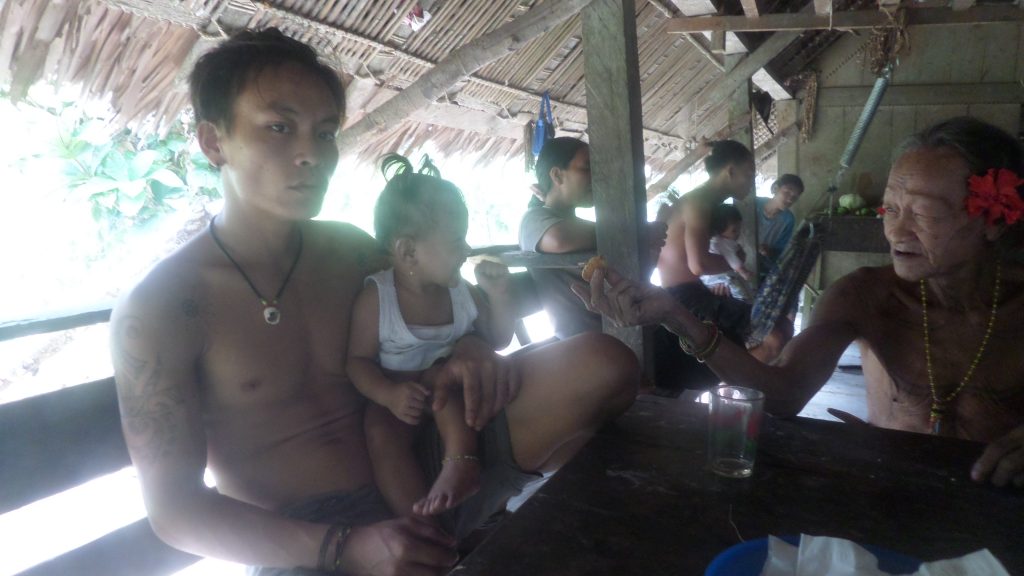
This way, I learnt a lot that would otherwise be impossible to learn about. My guide was very good, and he gave me a lot of information about their way of life, their beliefs, their traditions etc, but clearly, he can’t think of everything you may be interested in.
I asked them for example, if there are any rules when young people get married. Who can choose whom, how is the marriage arranged? Are there any particular hardships the young people (or their families) may face? And yes, there are, and finding a good partner is not that easy. But since I don’t want to make this blog post endlessly long, I have written a separate post about Mentawai culture, religion and traditions – see that post for more.
3. How to get to the Mentawai villages
3.1 Find a guide
First of all, you need to get to the city of Padang in West Sumatra. Once there, you have two options: you either organise and do everything yourself, or as I did: hire a guide who will arrange everything for you from transfer through visiting the families to food and drink. I am a little adventurous, but doing it myself seemed way too hard, and even if you could get to the villages somehow, logistics would be next to impossible (carrying all the food and drink enough for several days with you, finding the way to the houses in the thick jungle etc. etc.). And actually, I never talked to anyone who did it himself/herself. I only met one American guy, who said it was “quite possible”, but then he also had a guide with him…
Finding a guide is not going to be difficult, although you will have to do some research. I used the services of Eru (his name is sometimes spelled as Heru), who got so many positive reviews on Tripadvisor that I thought he must be reliable and good. And yes, he was. He speaks excellent English, he knows a lot about Mentawai culture, and he speaks Mentawai (he is an Indonesian young man, who lives in Padang). Plus he knows virtually everyone in the tribal villages and beyond, and local people welcomed him with big smiles. You can contact him through his Facebook profile, search for Eru Mamak.
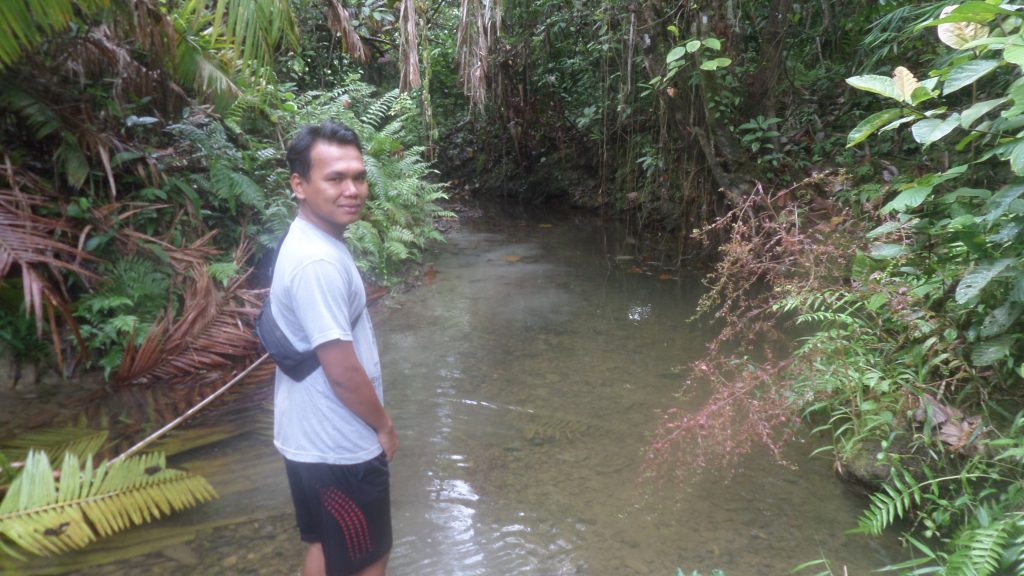
The price was steep for one person: 5,5 million rupees for 3 nights / 4 days, but this included everything from transport to and from my guesthouse, the fast ferry, other means of transport, food and drinking water, the porters etc. etc. It will be much more affordable for at least two people – another thing that makes solo travel a little difficult (or at least expensive).
3.2 Getting from Padang to Siberut
Most of the Mentawai villages are on Siberut island (although there are others on other Mentawai islands, too). From Padang, there are two types of ferries. One takes a whole night and is far from comfortable, the other will take you to Siberut in only a few hours. You must definitely take the ferry operated by Mentawai Fast, a local company. The price was 300.000 rupees one way. It takes about 3,5 to 4 hours to reach the north of Siberut, where you will wait an hour. The ferry will take some further passengers, and you continue to the south of Siberut – another 1,5 hours or so. You will arrive at Mailepet, a bigger town in the south of the island. This is the last chance you can buy anything in a shop, and the last place with electricity, (incredibly weak and almost unusable) mobile signals, roads and other mundane pleasures.
In Mailepet, you will need to get to the river, which is a short scooter ride away from the ferry. There, we already had a small boat waiting for us. The boat ride up the river took an hour. It was the end of the dry season, but there was very little rain, so at one section, we had to actually carry/push the boat and walk.
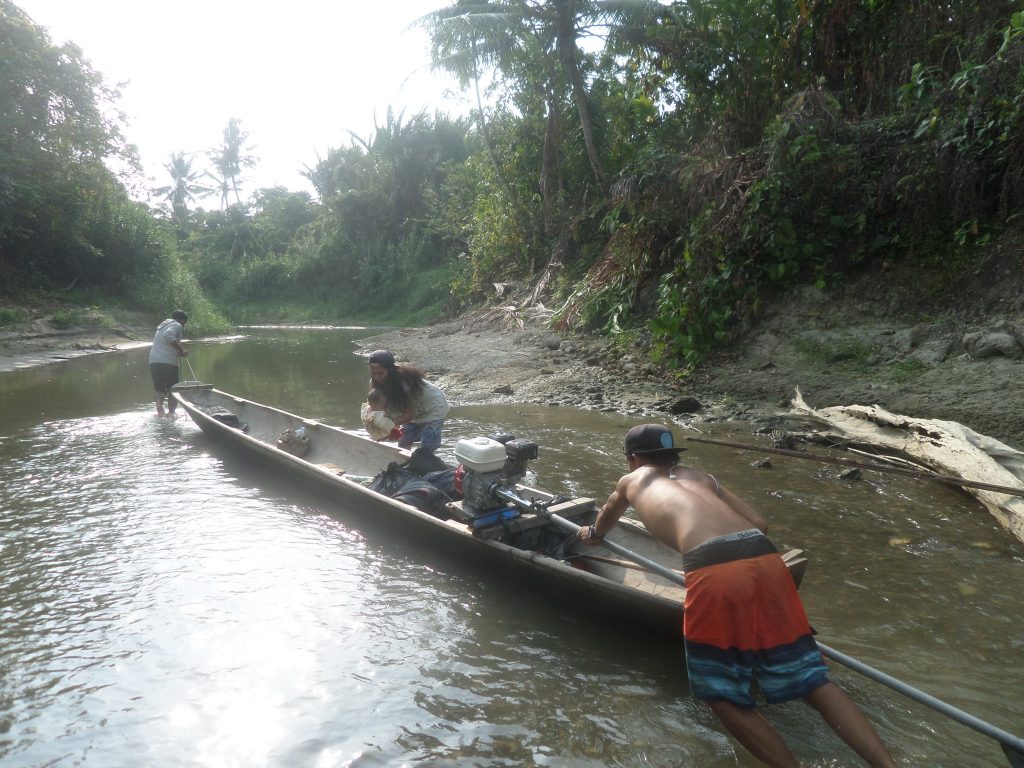
After one hour, you will arrive at a place which doesn’t have a name. We were greeted by some local people there – later it turned out they were all the members of the family I was going to visit and stay with. I don’t know how much we walked in the jungle, but it was a longish way, before we arrived at their house.
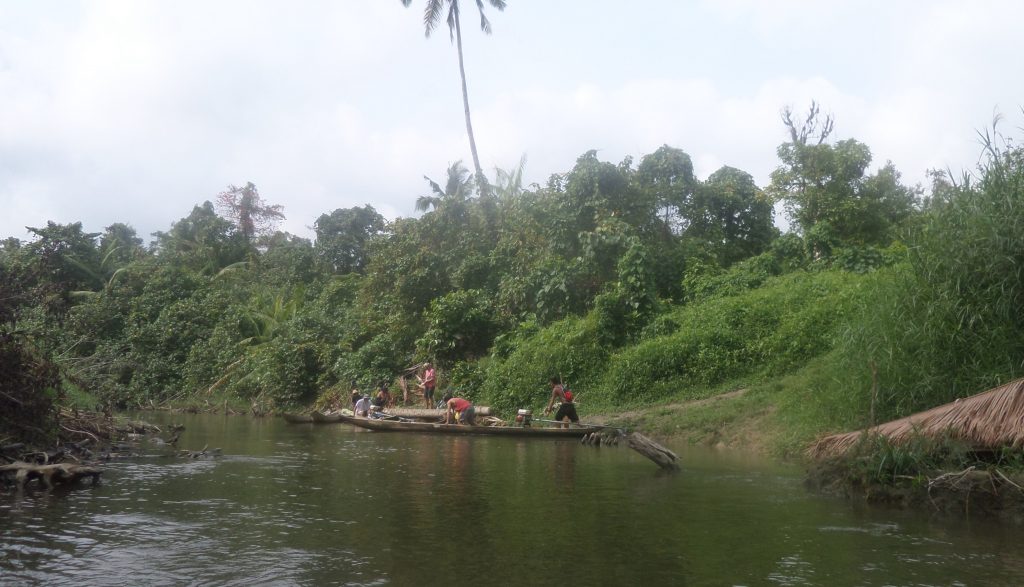


I later learned that the village does have a name: Rourogot – although you can’t find it on the maps. The houses in the village are so far away from each other, that when I “moved” from one family to another, we had to walk more than half an hour. So no surprise that on Google Maps, you won’t see any settlements or houses in the area, just thick jungle everywhere.

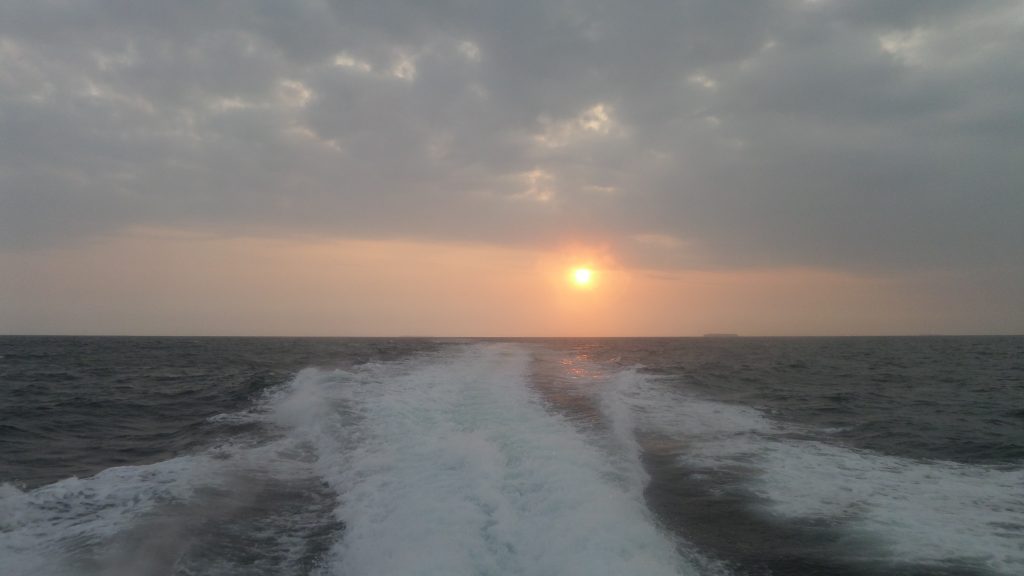
4. How to prepare for living in the jungle
If you decide to visit the Mentawai tribes, you are probably going to spend there at least two nights, but the standard is three nights.
When I was visiting, luckily, there was very little rain. But if you go in the rainy season, prepare for torrential rain. Bring a raincoat – an umbrella will be absolutely useless. You will have to walk in mud all the time. If there is no rain, like in my case, it is quite comfortable, I was actually wearing my sandals all the time.
In the houses, you will sleep on the floor, but ask your guide if they provide you with a mosquito net – that is very important there. Also bring enough mosquito repellent with you.

The families will probably have little children. If you want to make them – and the adults! – happy, bring them some chocolate or sweets or some sweet biscuits. All the adults smoke, and they smoke continuously. Should you be a smoker yourself, expect everyone to ask you for a cigarette. If then they realize that you are not smoking Marlboros, they will refuse to accept the cigarette they asked for.
For bathroom, you will use the river, although at one house (Amanjano’s family) there was a shower place in front of the house, where you can use the water from a barrel to clean yourself. I think it is much more fun to use the river though.
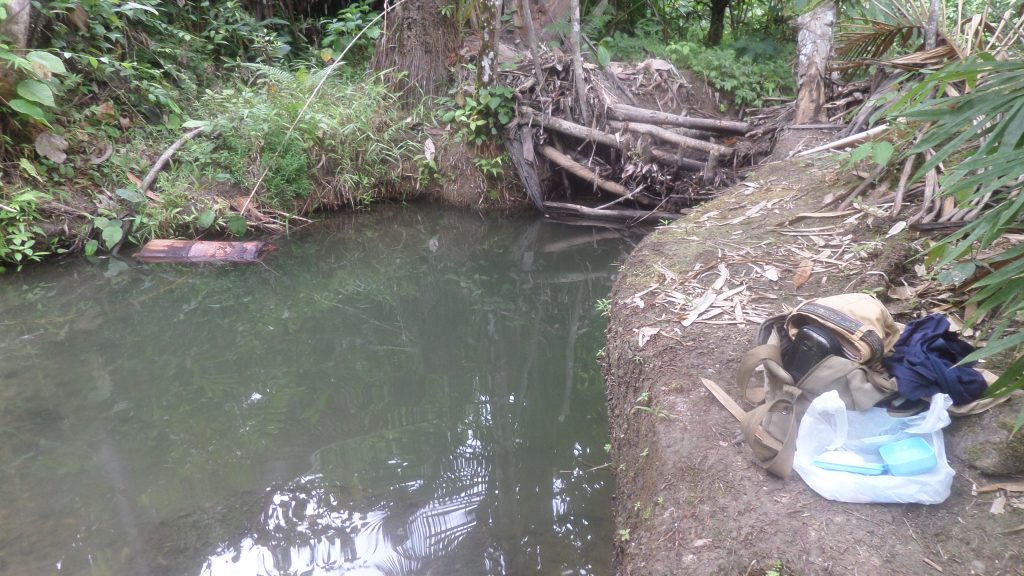

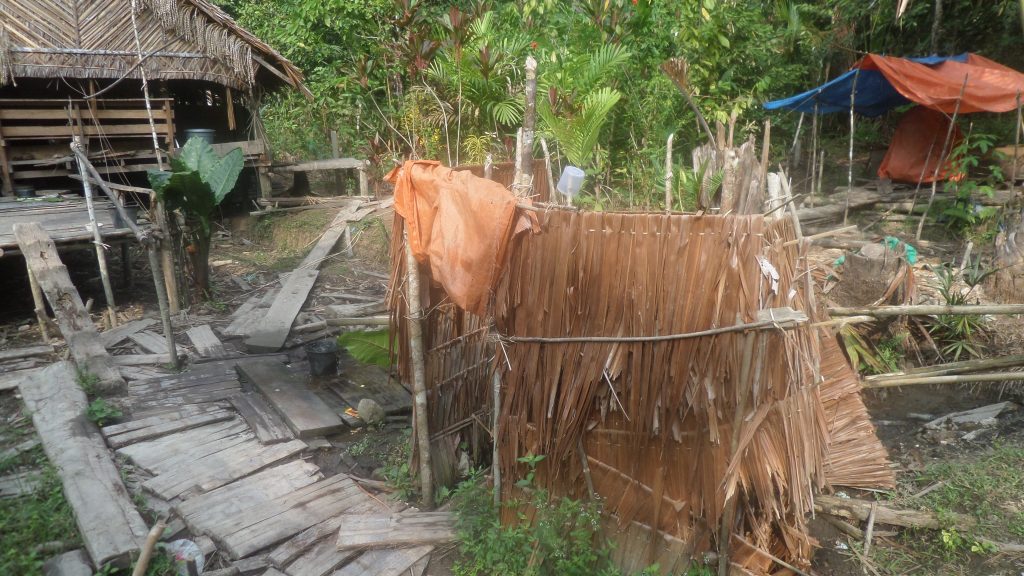
As for toilet, that was a little harder for me. Most of the surrounding jungle can be used as a toilet. When I first asked, they said to me: walk that way, and you will see a big tree. Go past it and find a suitable spot there. If you need to do “number-two”, you are expected to bury it with something – earth or leaves or both. Or if you can, dig a hole in the ground before with a stick.
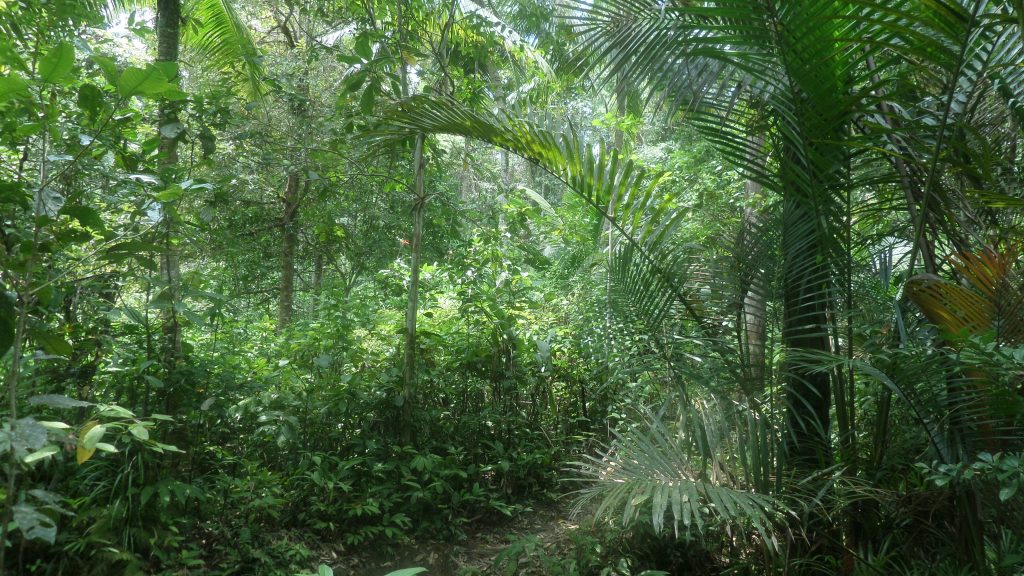
Food was prepared for me by my guide and his local helper. They prepared modern, nice, touristy things for me, like fried rice, boiled rice, vegetable stews, vegetable soups and even fried potatoes. We of course had meals together with the families, who were eating the same food as me, but I learnt later, that they never eat rice or potatoes. They go for other vegetables, sago and other things they usually produce locally.
Water was also brought with is from the city, but locals drink the water from the river (yes, the one you take a bath in and which you use as a road, too). For babies, they boil it first, though.

